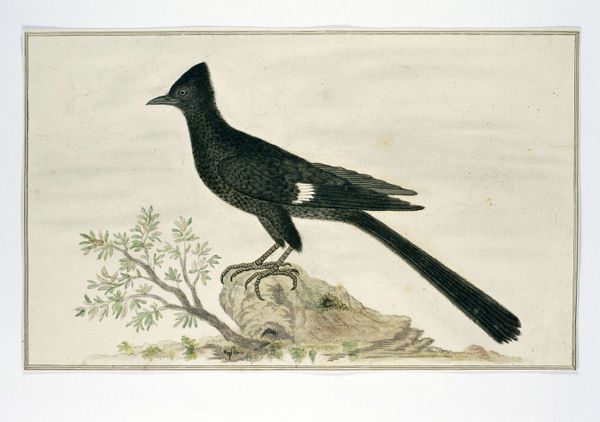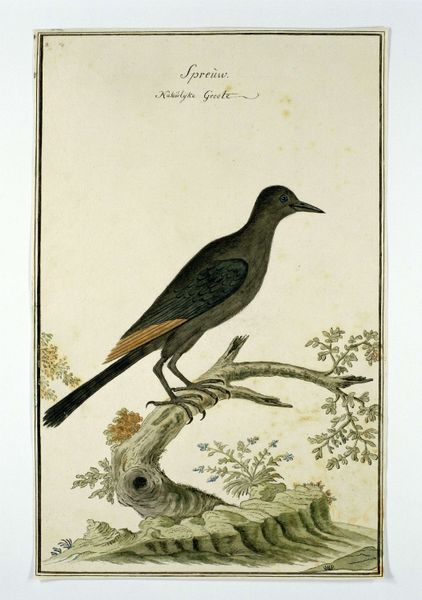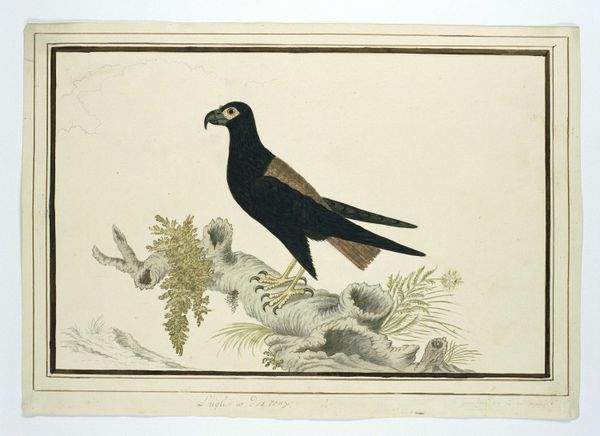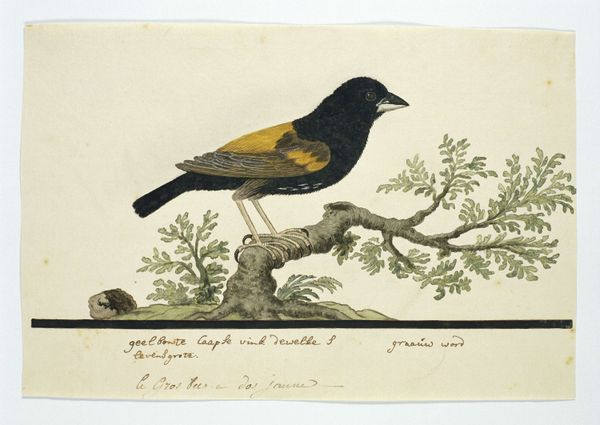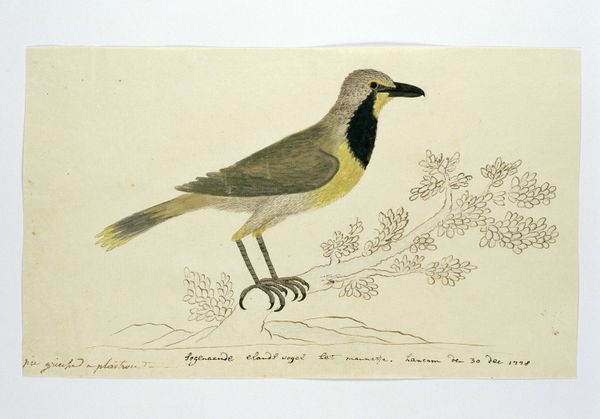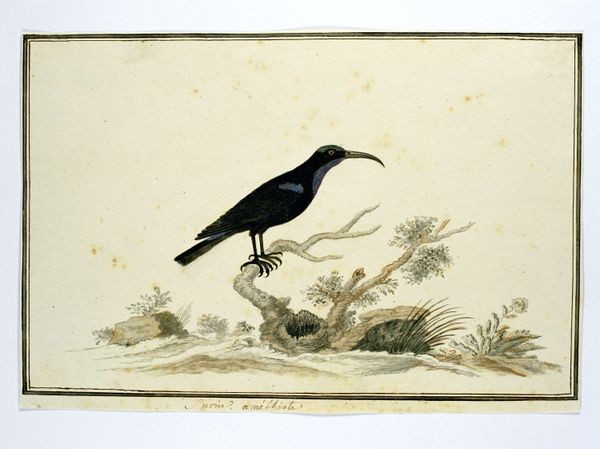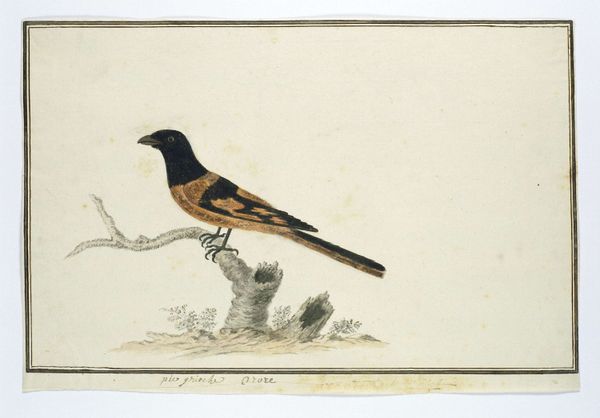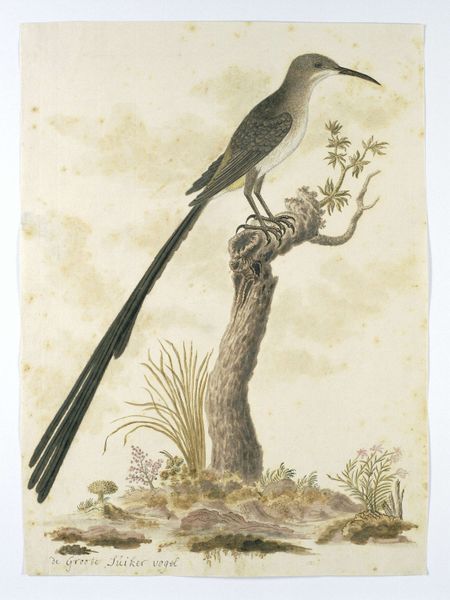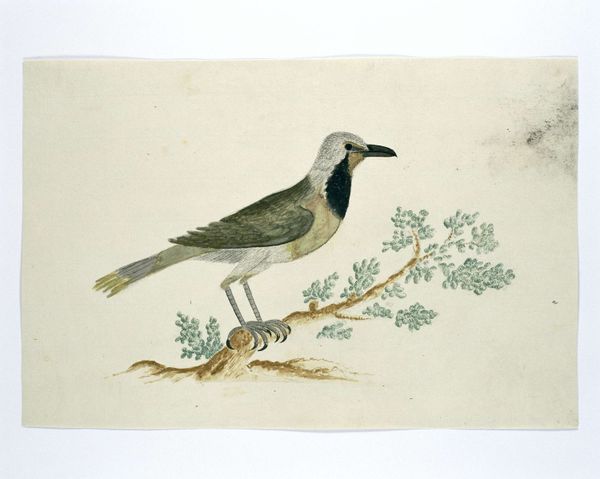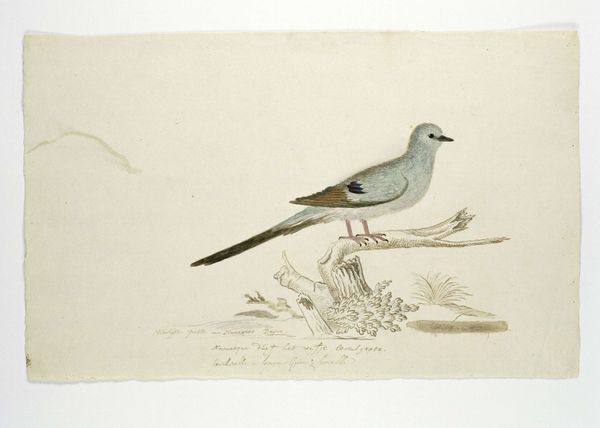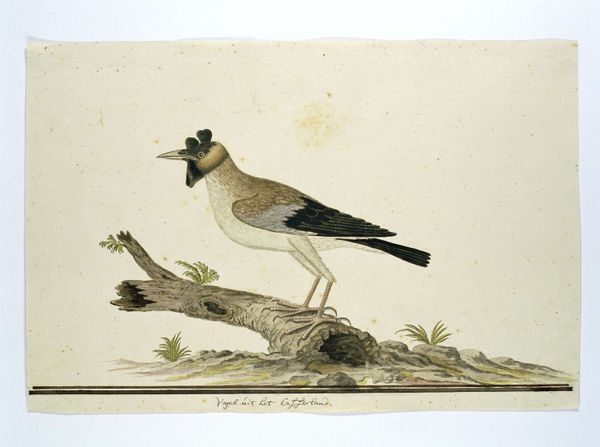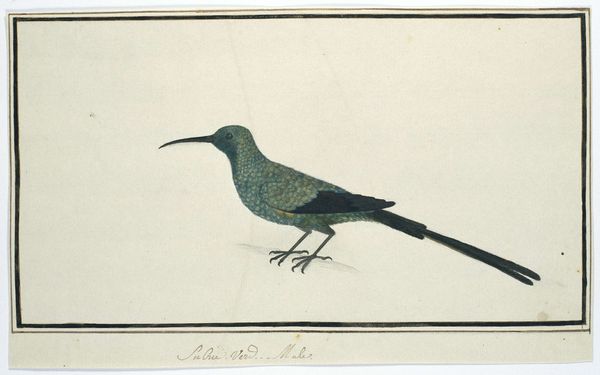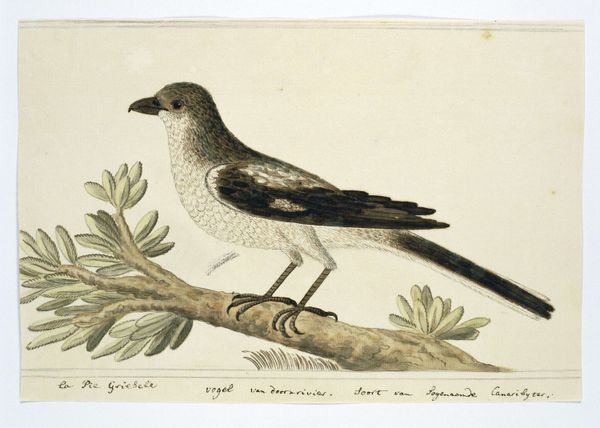
drawing, watercolor
#
drawing
#
landscape
#
watercolor
#
watercolour illustration
#
naturalism
#
watercolor
#
realism
Dimensions: height 660 mm, width 480 mm, height 268 mm, width 406 mm, height mm, width mm
Copyright: Rijks Museum: Open Domain
Curator: This lovely drawing captures a Clamator jacobinus, or Jacobin cuckoo. Attributed to Robert Jacob Gordon, it was likely created between 1777 and 1786 using watercolor. Editor: My initial reaction is that there’s something stark about this bird—almost unsettling. The sharp contrast between the intense black plumage and the pale background immediately catches the eye. It's like a visual alarm. Curator: Yes, and it's important to consider the colonial context. Gordon was a military commander in the Dutch East India Company. His "scientific" drawings served a very particular function, cataloguing and claiming knowledge. It’s a portrait not just of a bird, but of an assertion of power and a violent intrusion. Editor: That reading is intense. I can also consider it based on its visual features; the application of color—or lack thereof—draws my attention. The artist uses monochrome to an illustrative advantage, focusing attention to form through line. Curator: The bird itself carries complex symbolism within different cultures. In some, it signifies fidelity and guidance, whereas it represents disruption, deceit, or adultery in others. How might Gordon, a man implicated in colonial domination, understand and exploit these symbols? Editor: You are thinking about social and power dynamics. I still get stuck on how the stark blacks render an air of scientific accuracy while flirting with something almost graphic. Consider the long tail feathers versus the almost jewel-like focus on its eye. Curator: And think about this tension being a key feature of the colonial project: the dispassionate observation alongside, sometimes consciously or unconsciously, a looming anxiety. The setting isn’t lush; the creature’s posture seems wary, almost hunted, perhaps recognizing the invasive intent of its observer, its captor. Editor: An excellent point. My focus initially isolated the purely visual elements, yet by factoring in its colonial origins and cultural context I see deeper threads that dramatically shift my perspective on the artist’s process, a fusion of art, power, and anxiety. Curator: Indeed. Viewing this watercolor offers insight into the complexities of its historical moment, allowing us to question the apparent neutrality of scientific observation in relation to issues of colonialism and cultural symbolism.
Comments
No comments
Be the first to comment and join the conversation on the ultimate creative platform.
